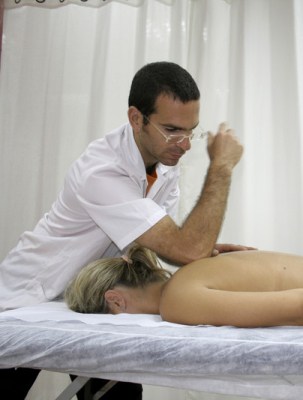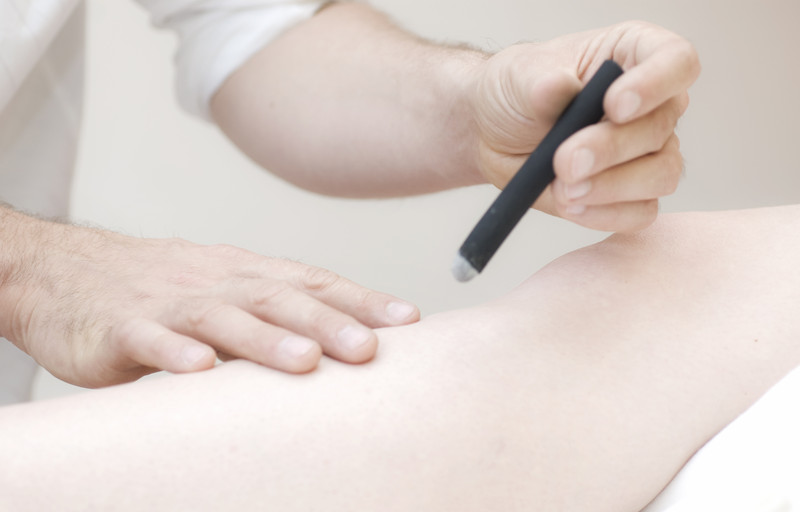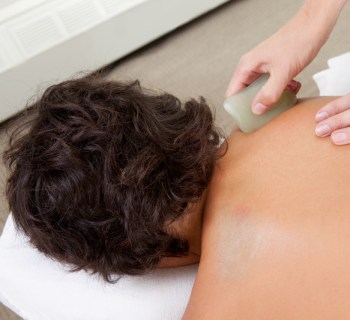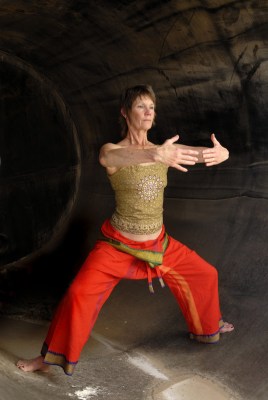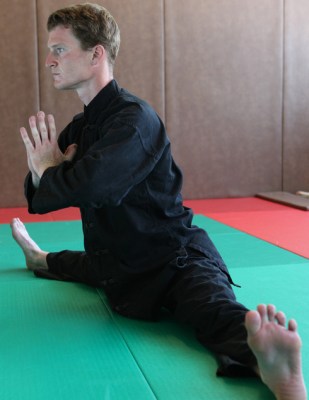Chinese Medicine includes various forms of physical body work as an important part of its therapies. As with Acupuncture and Herbal medicine these treatments are based on Traditional Chinese Medicine (TCM) theory and its understanding of Qi and meridians.
Tui Na: a form of massage based on the principles of TCM. It relies on various manipulation and massage techniques to affect the flow of Qi in the meridians. Very useful for painful conditions and generally relieving stress and tension. Tui na is often used for pediatric treatment as it is well suited to babies and young children.
Moxibustion: commonly just called moxa it is a form of heat treatment that uses the herb mugwort as a way of providing energy and warmth to the acupuncture meridians, while it is often combined with acupuncture it may commonly be used without it. It is very good for helping with pain, digestive upsets, and generally strenthening the body.
Gua Sha: a treatment involving scraping the surface of the body with a hard round edged implement such as the flat bottomed Chinese spoon (sometimes known as spooning.) The term loosely means, "to scrape away disease by allowing the disease to escape as sandy-looking objects through the skin." It is very good for pain in back, neck and shoulders although it can be used in other areas. A massage oil is used to lubricate the skin for the scrapping and initial treatment tends to draw some bruising to the surface. As the treatment progresses this bruising will no longer occur.
Cupping: is an technique that involves the placing glass or bamboo cups on the surface of the body, held in place by a vacuum. It effects the flow of Qi and blood in the body. The effect varies depending on the strength of vacuum, the duration and whether they are left stationary or moved. They may also sometimes be combined with acupuncture under the cup. cupping can help the body eliminate infection, relieve pain and improve the general health and wellbeing.
Qi Gong: combines mental visualization, breathing and excise to promote health and long life, it is sometimes referred to as moving meditation. Qi gong may appear similar to Tai Qi however there are many forms and it is often specific for certain illnesses or the strengthen particular internal organs. Qi Gong is known as an internal exercise as its focus in on the internal organs while external exercise is more focused on strength and flexibility.
External Exercise: the Chinese have developed many sets of exercise for general strength and flexibility improvement. They often derive from the wu shu (martial arts) traditions and may be prescribed as a part of a treatment plan.

